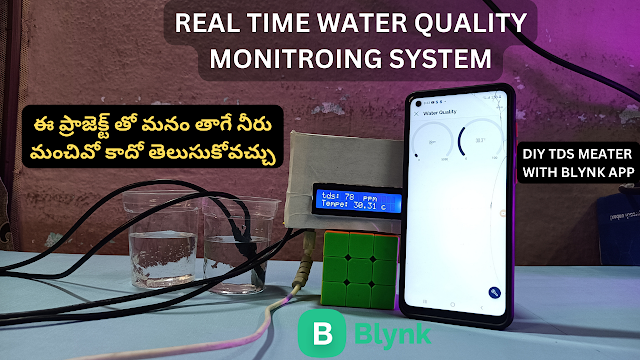One of the coolest things you can do with an Arduino is building an OLED clock. It's really easy to do and the results are really cool. First, you'll need an Arduino and an OLED display. The Arduino doesn't need to be very powerful, but it does need to have some USB capabilities. You can find OLED displays at many electronics stores. Next, you'll need to download the Arduino library for OLED displays. The library is free and can be found on the Arduino website. Once you have the library installed, you can use it to create your clock. To create your clock, first, start by creating a new sketch. The sketch will contain the code that controls the display. Once the sketch is created, you'll need to add the library to the Arduino. To do this, open the Arduino software and click on the Sketch tab. Then, click on the Include Library button and select the OLED Library file that you downloaded earlier.
Arduino clock project whit 0.96 inch OLED display
October 02, 2022
#include <SPI.h>
#include <Wire.h>
#include "RTClib.h"
#include <Adafruit_GFX.h>
#include <Adafruit_SSD1306.h>
#define SCREEN_WIDTH 128 // OLED display width, in pixels
#define SCREEN_HEIGHT 64 // OLED display height, in pixels
// Declaration for an SSD1306 display connected to I2C (SDA, SCL pins)
#define OLED_RESET 4 // Reset pin # (or -1 if sharing Arduino reset pin)
Adafruit_SSD1306 display(SCREEN_WIDTH, SCREEN_HEIGHT, &Wire, OLED_RESET);
// Setup RTC
RTC_DS1307 RTC;
char monthString[37]= {"JanFebMarAprMayJunJulAugSepOctNovDec"};
int monthIndex[122] ={0,3,6,9,12,15,18,21,24,27,30,33};
void setup() {
Serial.begin(9600);
// If you want to set the aref to something other than 5v
analogReference(EXTERNAL);
Wire.begin();
RTC.begin();
if (! RTC.isrunning()) {
Serial.println("RTC is NOT running!");
// following line sets the RTC to the date & time this sketch was compiled
RTC.adjust(DateTime(__DATE__, __TIME__));
}
// by default, we'll generate the high voltage from the 3.3v line internally! (neat!)
// Use I2C Scanner to check the address, if necessary change the 0x3C in the line below
display.begin(SSD1306_SWITCHCAPVCC, 0x3C); // initialize with the I2C addr 0x3C (for the 128x64)
// init done
// set font size
display.setTextSize(1); // small font size
display.setTextColor(WHITE);
display.clearDisplay();
}
void loop() {
//***** RTC **********
DateTime now = RTC.now();
display.setCursor(32,57);
display.print(now.day(), DEC);
display.print('/');
for (int i=0; i<=2; i++){
display.print(monthString[monthIndex[now.month()-1]+i]);
}
display.print('/');
display.print(now.year(), DEC);
// *********************
//
// display time in digital format
display.setCursor(10,2);
display.print(now.hour(), DEC);
printDigits(now.minute());
printDigits(now.second());
//
// Now draw the clock face
display.drawCircle(display.width()/2, display.height()/2, 20, WHITE);
display.drawCircle(display.width()/2, display.height()/2, 2, WHITE);
//
//hour ticks
for( int z=0; z < 360;z= z + 30 ){
//Begin at 0° and stop at 360°
float angle = z ;
angle=(angle/57.29577951) ; //Convert degrees to radians
int x2=(64+(sin(angle)*20));
int y2=(32-(cos(angle)*20));
int x3=(64+(sin(angle)*(20-5)));
int y3=(32-(cos(angle)*(20-5)));
display.drawLine(x2,y2,x3,y3,WHITE);
}
// display second hand
float angle = now.second()*6 ;
angle=(angle/57.29577951) ; //Convert degrees to radians
int x3=(64+(sin(angle)*(20)));
int y3=(32-(cos(angle)*(20)));
display.drawLine(64,32,x3,y3,WHITE);
//
// display minute hand
angle = now.minute() * 6 ;
angle=(angle/57.29577951) ; //Convert degrees to radians
x3=(64+(sin(angle)*(20-3)));
y3=(32-(cos(angle)*(20-3)));
display.drawLine(64,32,x3,y3,WHITE);
//
// display hour hand
angle = now.hour() * 30 + int((now.minute() / 12) * 6 ) ;
angle=(angle/57.29577951) ; //Convert degrees to radians
x3=(64+(sin(angle)*(20-11)));
y3=(32-(cos(angle)*(20-11)));
display.drawLine(64,32,x3,y3,WHITE);
}
// **************** End Main Loop *****************
void printDigits(int digits){
// utility function for digital clock display: prints preceding colon and leading 0
display.print(":");
if(digits < 10)
display.print('0');
display.print(digits);
}
Subscribe Us
Most Popular
ESP 32 Tutorial - Introduction of ESP32
January 17, 2022
Featured Post

Crafting a TDS and Temperature Monitoring System with ESP8266: A DIY Guide
meworkstelugu
December 31, 2023
Introduction: In the realm of water quality monitoring, creating a TDS (Total Dissolv…
Popular Posts
google ads
Created By Blogging | Distributed By Gooyaabi Templates









0 Comments